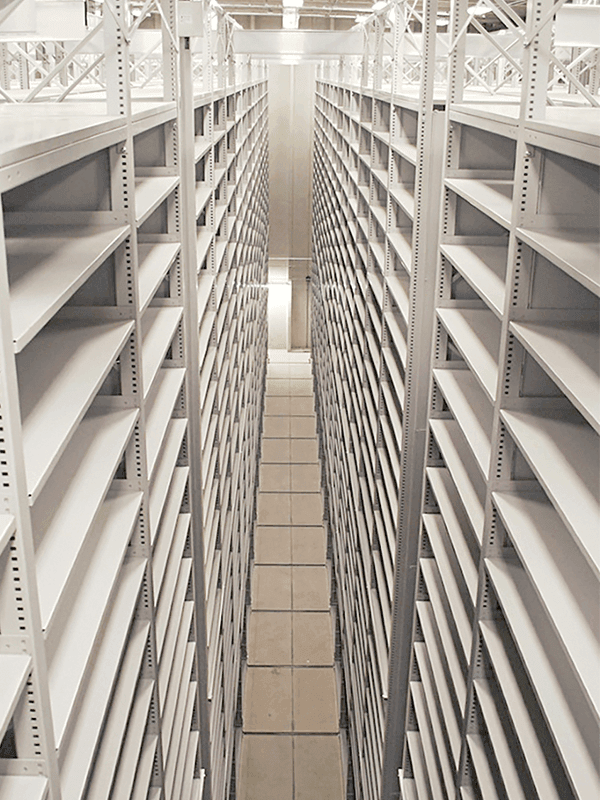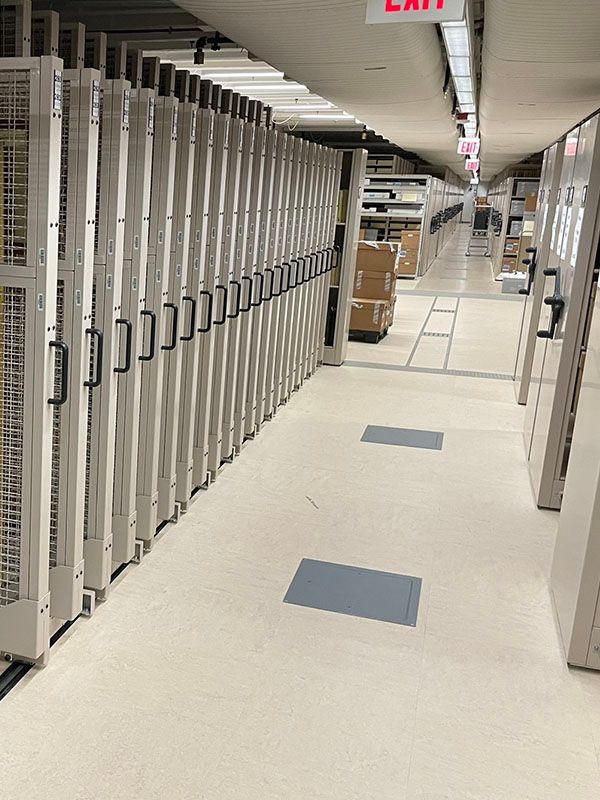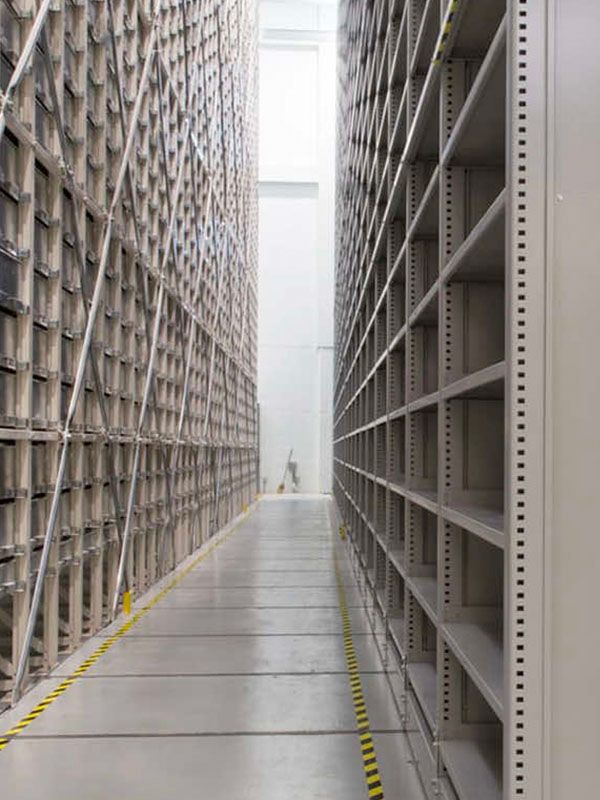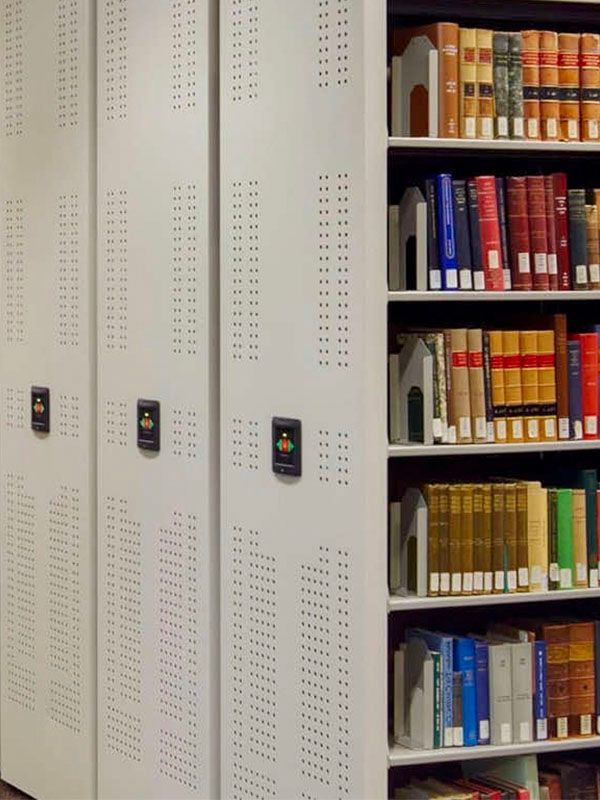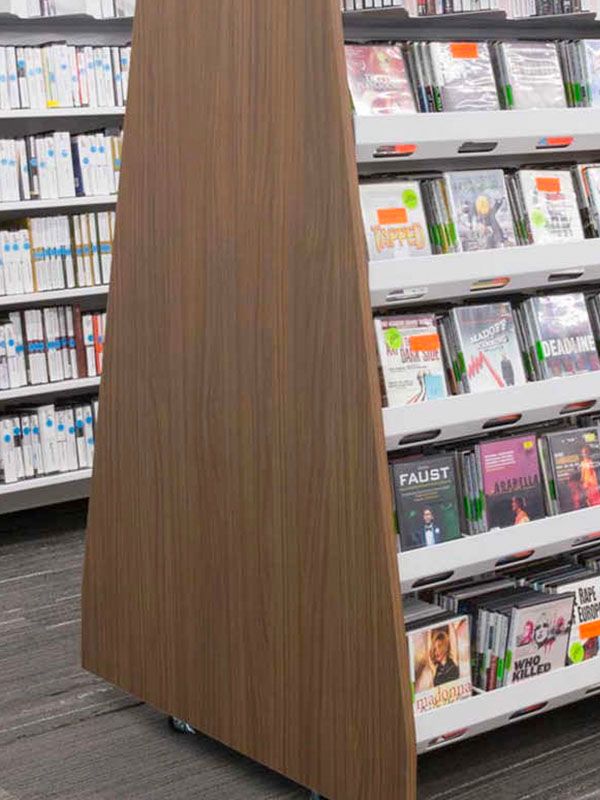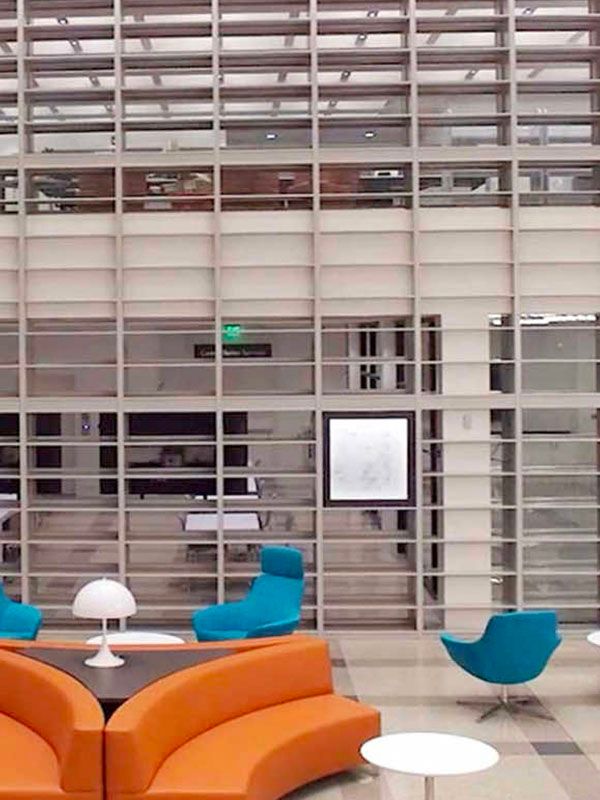Winston-Salem, North Carolina
Sheet Music Storage in a Music Library
Spacesaver helps a music library create highly specialized storage solutions for sheet music and recordings.
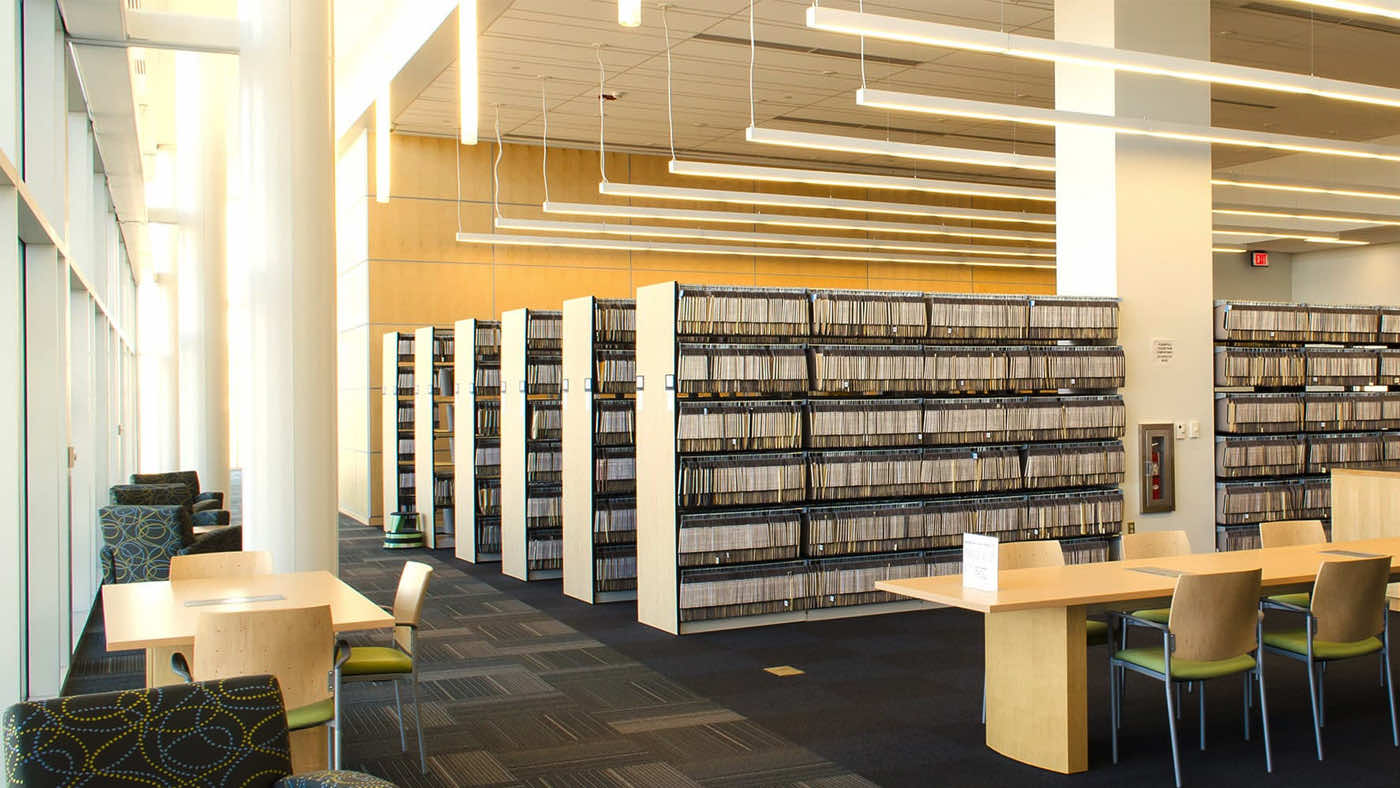
The 75,000-square-foot Semans Library is one of four new buildings on the University of North Carolina School of the Arts campus. In addition to typical stacks, collaboration areas, and study rooms, the building also houses the Benjamin F. Ward Music Library, a highly specialized “library within a library” that contains 50,000 sound recordings, 55,000 musical scores, and thousands of pages of sheet music.
These items are usually larger than books, and they require unique storage solutions in order to provide accessibility for patrons and staff, protect the materials, and make smart use of available space. Knowing that Spacesaver’s nationwide network of local design consultants specializes in creating library storage solutions, the librarians turned to their local Spacesaver representative to learn more about their options as they began planning the new space.
"Paper is not going away anytime soon, at least not in Western classical music."
- Christia Thomason, Head of Technical Services
Product Used In This Music Library
This project used custom-sized shelving to accommodate sheet music, along with compact mobile shelving for sound recordings to increase storage capacity and efficiency. Download a brochure to learn more about our mechanical-assist compactor systems.
Product Used In This Music Library
This project used custom-sized shelving to accommodate sheet music, along with compact mobile shelving for sound recordings to increase storage capacity and efficiency. Download a brochure to learn more about our mechanical-assist compactor systems.

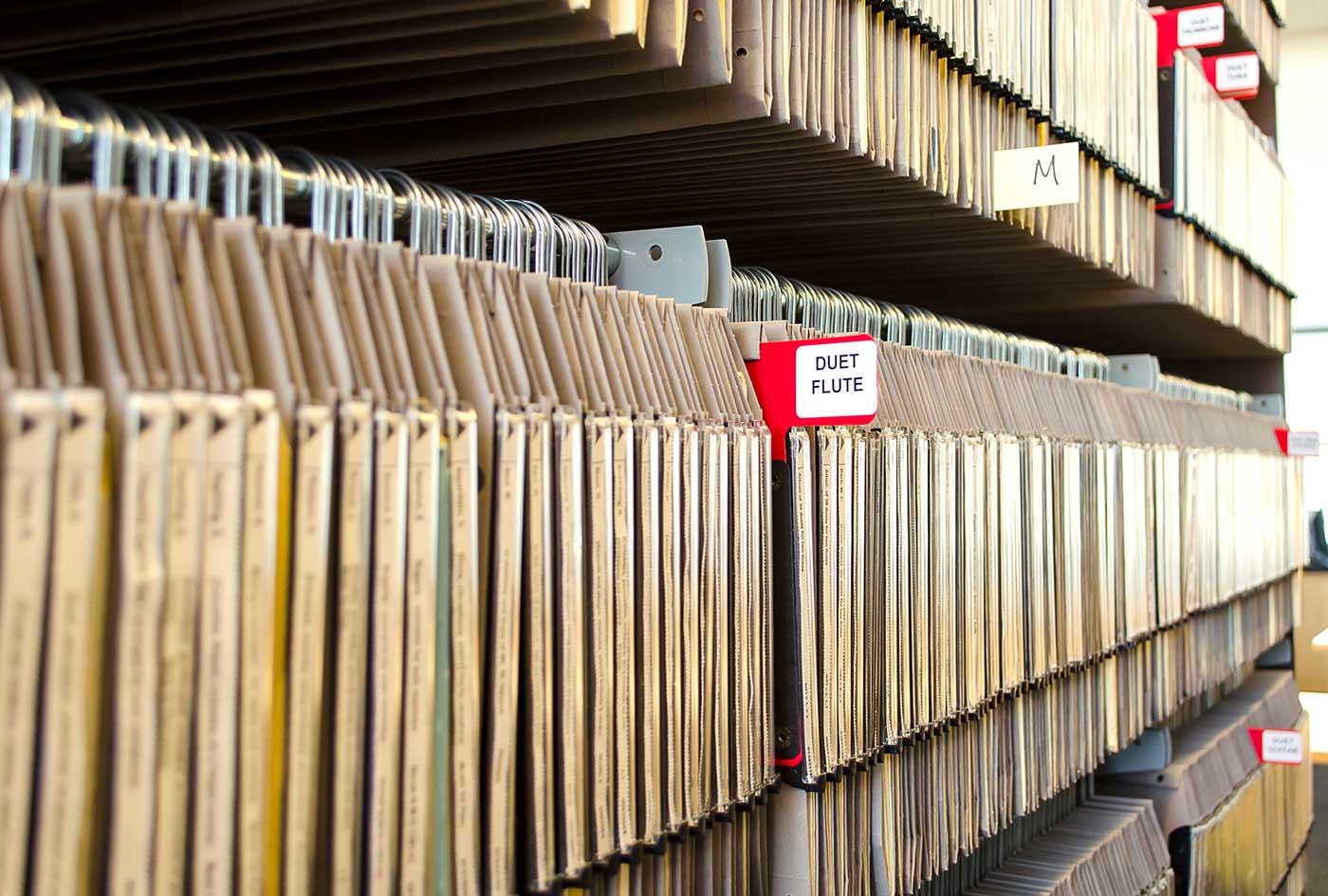
Did you know that the typical library storage products don’t necessarily work for storing musical scores and other oversized materials? Spacesaver can help keep sheet music, sound recordings, and other items organized and accessible.
A Growing & Overflowing Collection
One of the librarians’ main concerns was providing students and other patrons with convenient access to sheet music for practice and performance. The library’s sheet music collection is its most heavily used collection due to several factors. Sheet music is usually copyrighted, so it generally isn’t available online — at least not for free, and penny-pinching students typically don’t want to pay for it. And even when sheet music is available digitally, it’s too detailed to be legible on a screen; it must be printed on large paper in order for musicians to see it.
"The ease of use and the flexibility have allowed us to really maximize what we have."
- Christia Thomason, Head of Technical Services
“Paper is not going away anytime soon, at least in Western classical music, which forms the core of this institution’s curriculum,” said Christia Thomason, who serves as the head of the library’s technical services. “There are still millions and millions of volumes that are simply not acceptable digitally.” The library also needed to store legacy media collections and accommodate items that were gifted to the institution. The collection eventually outgrew the storage areas in the former building, resulting in materials that were overflowing into staff offices, workrooms, and other areas. “Things were stacked all over the place, in offices, under tables,” said Christia Thomason, head of the library’s technical services. “We knew where everything was, but we had to get very creative about where we stored things.”
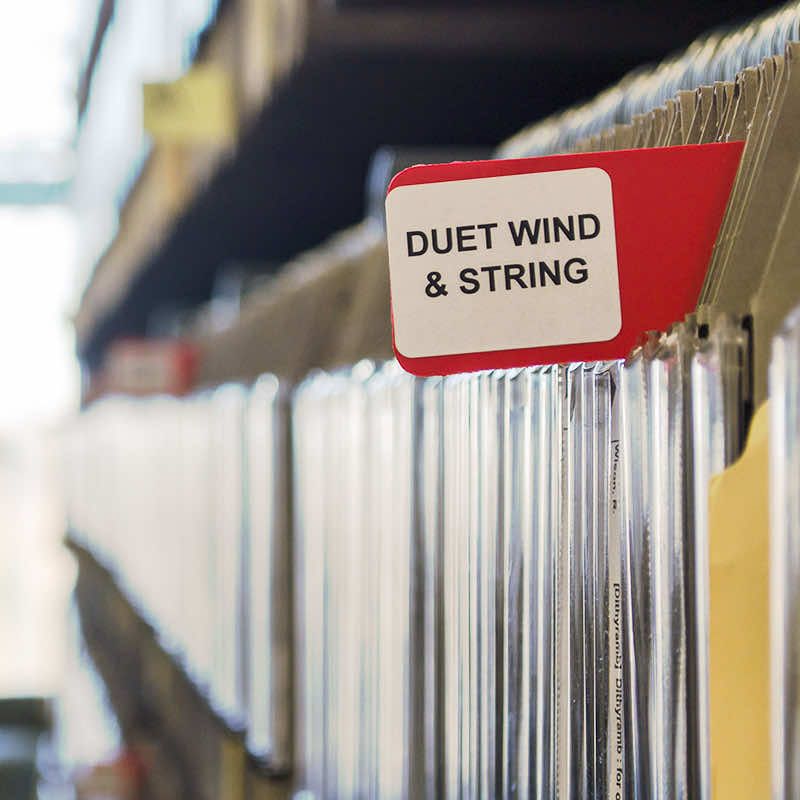
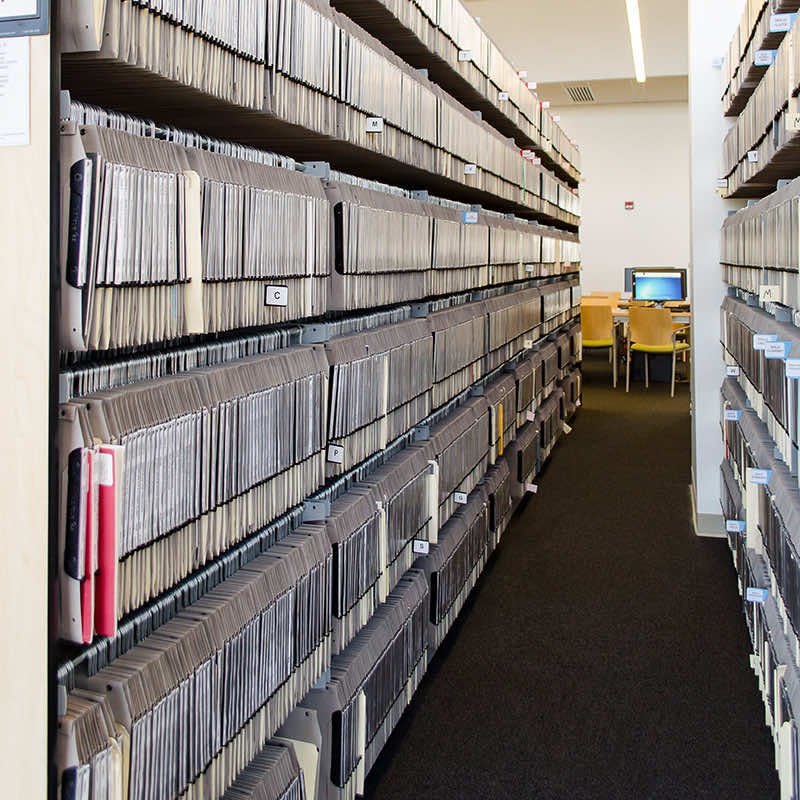
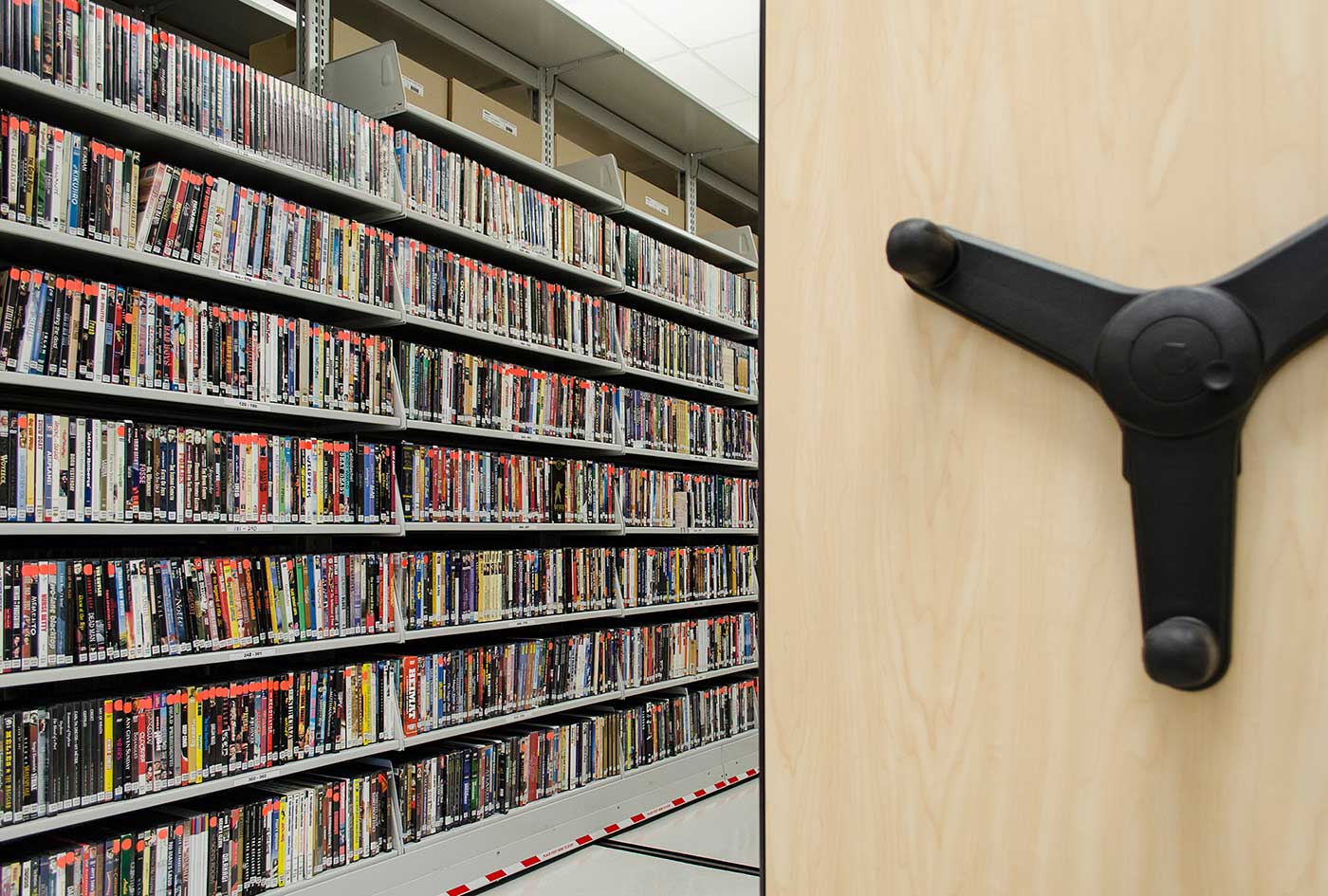
"This is heavy material, but even the smallest staff member can move it with ease."
- Leslie Kamtman, Library Director
Specialized Storage for Specialized Collections
As they planned the new building, staff worked with the Spacesaver consultant and the project architects to design a system that stores the collection compactly while still allowing quick and convenient access. Scores are stored in oversized hanging folders on specially designed shelving. Other shelving stores CDs, LPs, and miniature scores on a compact mobile Spacesaver storage system, which allows shelves to move along rails. The mobile shelves are moved by hand with the aid of mechanical assist handles, allowing staff to move thousands of pounds with minimal effort. “This is heavy material,” said library director Leslie Kamtman, noting that 20,000 LPs are stored on one of the 33-foot-long units. “But even the smallest staff member can move it with ease.”
Spacesaver shelving is not only used in the music library; cantilever shelves throughout the building house books and other items. Since Spacesaver is a specified supplier to the Sourcewell Contract, the purchasing process was simple and the library was assured of top quality and the best price. And because all Spacesaver products are engineered and manufactured in the USA, even the custom-designed solutions were cost-effective.
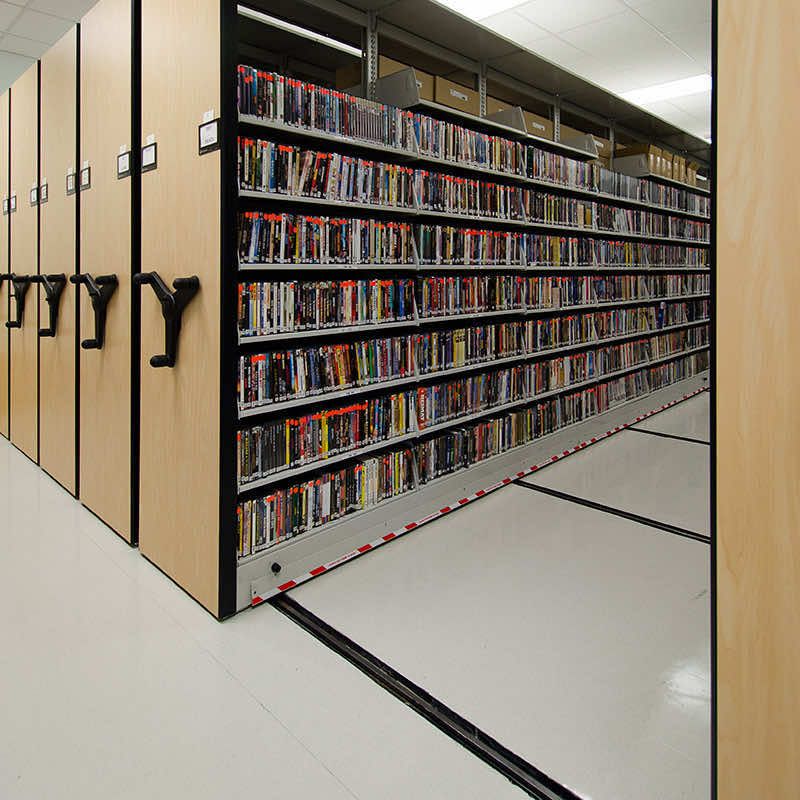
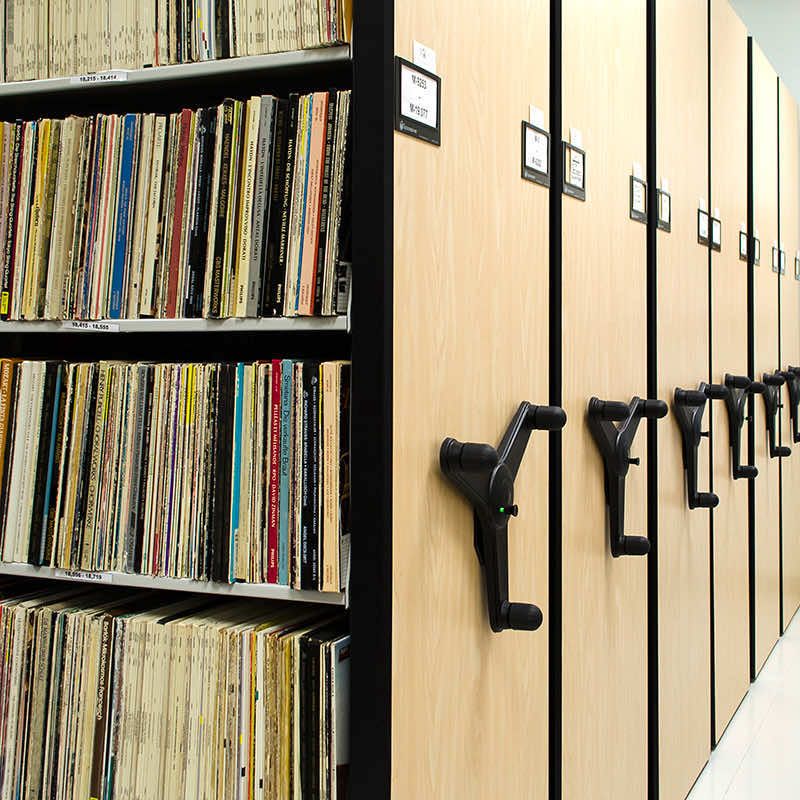
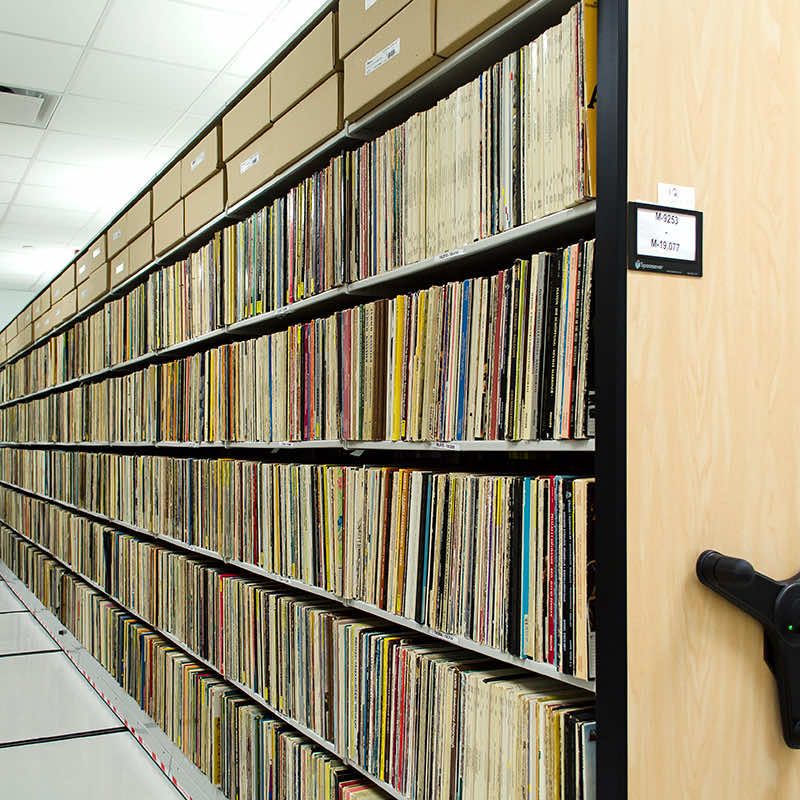
Space Planning Tips for Music Librarians
Thomason and Kamtman offered tips for other music librarians who might be embarking on a redesign project. “To some people, shelves are shelves,” Thomason said. “But they aren’t. When your project is just starting out, get as many specific measurements as possible to the right person and keep checking the final documents to be sure they’re correct.”
Kamtman added that a liaison between staff and the project architect is often helpful. “Make sure you’re working with a company that understands the specific, specialized needs of your materials,” she said. “What works in the general collection doesn’t work for us.”
Their primary words of wisdom: Advocate for the specialized needs of the items in your collection. Be clear. And then follow up to be sure that storage needs are being met as the design phase progresses.
Leslie offered one final piece of advice: “Ask for more storage capacity than you think you’ll need, because you never know what future gifts are right around the corner.”
